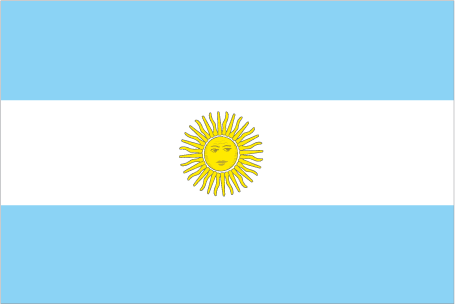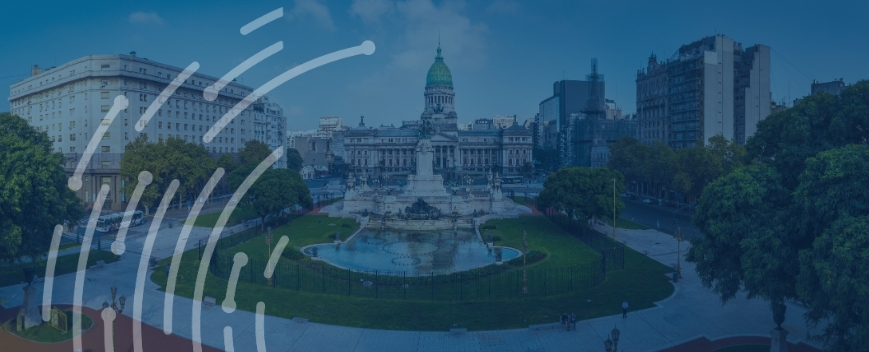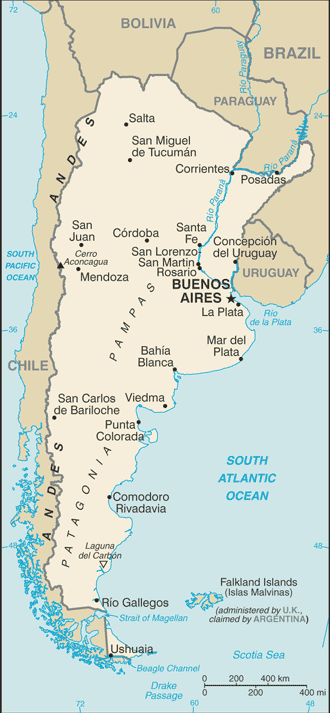Exporting to Argentina


Argentina Country Profile
Official Name (Local Language) Republica Argentina
Capital Buenos Aires
Population 43,886,748
Currency Argentine Peso
GDP $541.7 billion
Languages Spanish
Phone Dial In 54
Argentina Imports Profile
Imports ($m USD) 66,899
Number of Imports Products 4,102
Number of Imports Partners 185

Argentina Economic Statistics
Government Website | https://www.argentina.gob.ar/ |
| Sovereign Ratings | https://countryeconomy.com/ratings/argentina |
| Central Bank | Banco Central de la República Argentina |
| Currency USD Exchange Rate | 14.92 |
| Unemployment Rate | 8% |
| Population below poverty line | 32.2% |
| Inflation Rate | 42.8% |
| Prime Lending Rate | 32.3% |
| GDP | $541.7billion |
| GDP Pro Capita (PPP) | $20,200 |
| Currency Name | Argentine Peso |
| Currency Code | ARS |
| World Bank Classification | Upper Middle Income |
| Competitive Industrial Performance | 104/138 |
| Corruption Perceptions Index | 85/180 |
| Ease of Doing Business | 119/190 |
| Enabling Trade Index | 94/136 |
Access trade, receivables and supply chain finance
We assist companies to access trade and receivables finance through our relationships with 270+ banks, funds and alternative finance houses.
Get StartedExporting to Argentina
Argentina is one of the largest economies in Latin America, with a highly skilled workforce and sometimes unstable politics. Argentina’s main imports are oil and gas, motor vehicles, machinery, and technological equipment. Its main import sources are China, Brazil, the US, and Germany. Argentina has a resilient economy and a government which is committed to strengthening the country’s macroeconomic outlook. However, growth has been lower than expected in recent years, and even when GDP seems to be rising, other indicators such as inflation and poverty rates remain high.
Argentina’s economy is relatively closed to trade, as the government has tried to preserve its falling foreign exchange reserves by imposing import restrictions and heavy regulatory burdens on imported goods. These can cause long delays, which are sometimes worsened by difficulty in accessing the official foreign exchange market to pay for exports in dollars. Import restrictions, both official and non-tariff barriers, are unlikely to decrease until the economic situation improves. Currently, the government is struggling to rein in high inflation, and state debt is rising; public confidence is low, and worsened by the wide gap between official and actual exchange rates. A proposed policy of dollarisation, championed by the new president elected in 2023, could stabilise prices and make importing a smoother process, but may come at the cost of uncompetitive exports.
Buenos Aires, the capital, houses the largest port in South America and is home to almost half of Argentina’s population. The port is a crucial trade hub in the continent, receiving consumer goods and machinery from all over the world for distribution across Latin America. It was privatised in 1994 and has seen much infrastructural investment since then, which is likely to continue and make imports smoother and reduce delays.
Chart Showing GDP Growth Compared to rest of world
GDP Composition for China
Agriculture
4%
Sunflower seeds, lemons, soybeans, grapes, corn, tobacco, peanuts, tea, wheat; livestock
Industry
30.2%
Food processing, motor vehicles, consumer durables, textiles, chemicals and petrochemicals, printing, metallurgy, steel
Services
58.4%
Map
Top 5 Import Partners
| Country | Trade | % Partner Share |
| Brazil | 17,870 | 26.71 |
| China | 12,314 | 18.41 |
| United States | 7,635 | 11.41 |
| Germany | 3,229 | 4.83 |
| Mexico | 2,081 | 3.11 |
Top 5 Import Products
| Export Product | Number |
| Automobiles with reciprocating piston engine di | 9.4% |
| Petroleum oils, etc, (excl. crude); preparation | 4.2% |
| Automobiles with reciprocating piston engine di | 3.4% |
| Parts of electrical apparatus for line telephon | 3.6% |
| Natural gas in gaseous state | 3.1% |
Speak to our trade finance team
Local Partners
- All Topics
- Argentina Trade Resources
- Export Finance and ECA Topics
- Local Conferences



















